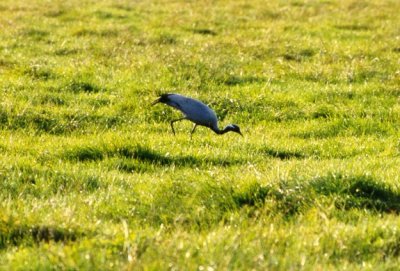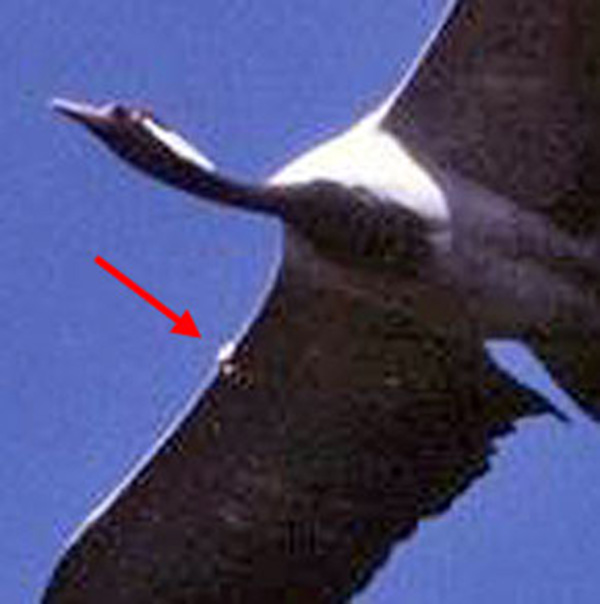On 22 August 2000 a Demoiselle Crane Anthropoides virgo was
found by Paul Knolle south of Enschede (Overijssel) near the village of Buurse. This is not a popular species in the
Netherlands, because its reputation is one of escapes, tame
behaviour or coloured rings, suspecting captive origin. This
reputation was the main reason to reject two records of 30 April
1993 and and 1 May 1995 of flying birds (Dutch Birding 21: 80,
1999) and one on 13 March 1999 (Dutch Birding 21: 126-127, 1999),
because it was not possible to see if the birds wore rings or not.
Other rejected records for example in the past include 2 birds in
1989 (claimed to be escapes), 1 in 1990-91 (thought to be
connected with the 1989 record), 1 in 1996 (tame behaviour, traces
of wing clipping), 1 in 1997 (wearing a small coloured ring) and
one from 20 August till 3 Novemer 1998 (anomalous behaviour) and
again on in July 2000 (wearing a small coloured ring).
The bird at Buurse did behave quite properly and slept at
night in a small pond nearby. It had shed p5 on the right wing (Demoiselle
Cranes moult centrifugally, which means p5 is shed first, then p4,
p6, p3, p7 etc.). It was last seen on Saturday 26 August seeing
flying in northwestern direction.

August 2000, Beerse Ovl; © David Hoekstra.

August 2000, Beerse Ovl; © Anonymus.
At first this record was accepted as the first record for the Netherlands. The the 1990-91 and 1998 records were reviewed but were still regarded as from dubious origin. Then, photographs by an unknown photographer revealed the bird had an artefact on the leading edge of the right wing and therefore it was rejected after review.
The Dutch rarities commitee is always facing a tough job in considering these kind of records: rejecting this record wil have consequences for other records of raptors like Golden Eagle, Long-legged Buzzard, Gyr Falcon, all vultures, several ducks like Harlequin Duck, King Eider, American Wigeon, Blue-winged Teal, and geese species like Red-breasted Goose, Snow Goose or buntings like Yellow-browed Bunting, Black-headed and Red-headed Bunting. Accepting the Demoiselle Crane will probably diminish the committee's credibility. It is an old debate. Where do you draw the line? If you have seen one, ten or 50 individuals in captivity, should you consider all records of a particular bird species as being escapes? At this time the Dutch rarities committee follows the rule that if a bird is capable of getting here (being a long distance migrant in the holarctic or there are several records of it in surrounding countries) and plumage and behaviour do not show signs of captive origin, it is a candidate for the Dutch List. It is my opinion this is the least worst choice!
Do you want to go to the main-index, the 2000-index or the next species, the Long-legged Buzzard?